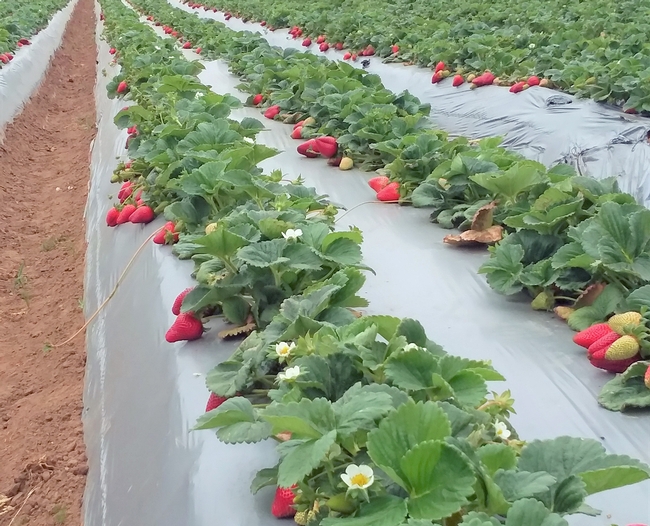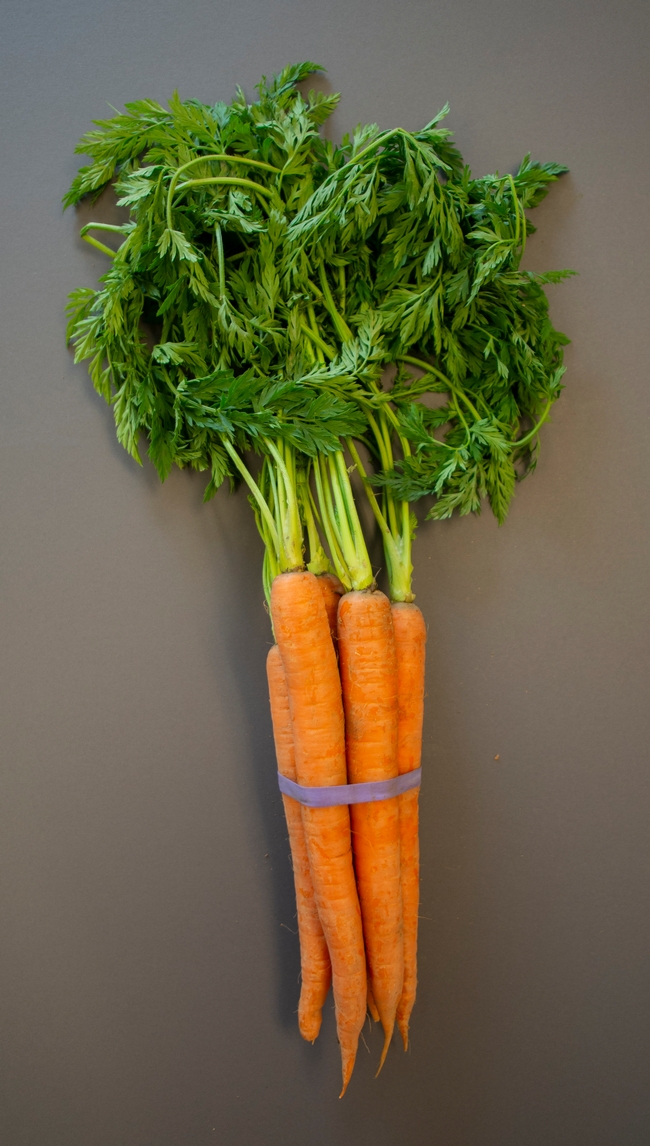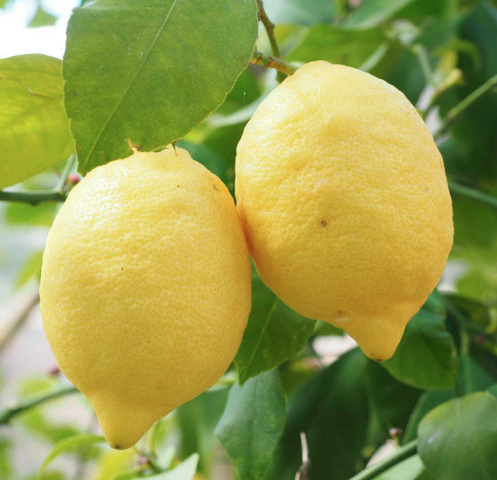
Posts Tagged: production
Organics Still Gaining Ground in CA
Organic farming continues to expand in California and now includes more than 360 commodities, according to a new University of California report. The number of organic growers, acreage and farm gate sales revenue is reported by commodity, county, region and statewide in the new “Statistical Review of California Organic Agriculture, 2013-2016.” The data are collected from farms that register as organic with the California Department of Food and Agriculture.
“This report highlights the incredible diversity and abundance of organic crops being grown across so many different geographic regions in the state, which reflects California's leading role in this production sector,” said Houston Wilson, director of the new UC Organic Agriculture Institute.
“Dairies continue to lead by value of organic production,” said Rachael Goodhue, UC Davis professor of agricultural and resource economics and coauthor of the report.
The number of organic growers in California jumped from 2,089 in 2013 to 3,108 in 2016. The top 10 organic commodities for sales value in 2016 were cow milk, strawberries, carrots, wine grapes, table grapes, sweet potatoes, almonds, raspberries, salad mix, and chicken eggs.
“This review is critical to understand the changes in the fast-growing organic agriculture sector in the state where more than 50% of the nation's organic vegetables and fruits are produced,” said Joji Muramoto, UC Cooperative Extension organic production specialist at UC Santa Cruz and coauthor of the report. “It provides statistics of all organic commodities produced across the state as well as at county level. This is the primary reference to learn about the size, diversity, and trends of organic agriculture in the state.”
In 2016, California organic sales were $3.1 billion with an average of $1 million in sales per farm, but revenue varied widely among farms. For example, San Diego County had the most organic growers (313) in 2016, but Kern County's 47 organic farmers earned the most in total organic sales: $381 million on 49,727 acres, excluding pasture and rangeland, according to Muramoto.
“The average gross income of organic farms increased 14-fold from 1994 to 2016, reaching $1 million in 2016,” Muramoto said. “However, 77% of growers received less than $500,000 per year and 22% of growers who made $500,000 or more per year received 94% of the total gross sales, showing the income concentration among organic growers in the state.”
The statistical review of California's organic agriculture had been published since 1998 by the late Karen Klonsky, UC Cooperative Extension specialist, and her team after statistics for organic agriculture became available in 1992 as a result of the California Organic Food Act.
The last report published by Klonsky, who passed away in 2018, covered 2009-2012. All previous organic agriculture statistics reports can be accessed at https://aic.ucdavis.edu/research1/organic.html.
“This report of organic data continues the series of studies initiated by Karen Klonsky many years ago. It contains vital summary information for industry and policymakers as well as researchers,” said Goodhue.
Since the data collection began in 1994, the number of organic growers in California has increased 2.8-fold to 3,109 and the farm-level sales 40-fold to $3.1 billion in 2016.
“Accurate annual data on California organic crop production, acreage and value is critical to understanding the scale and scope of this growing agricultural sector,” said Wilson. “As the UC Organic Agriculture Institute begins to develop research and extension programs, it is important that we have a reliable way to assess the extent and geography of organic production as well as track changes over time.”
Muramoto, who became the UC Cooperative Extension organic production specialist in 2019, collaborated with Goodhue, Daniel Sumner, director of the UC Agricultural Issues Center and UC Davis professor of agricultural and resource economics; and UC Davis graduate student Hanlin Wei to produce the latest statistical review of California's organic agriculture.
More recent years are not included because the data collected by CDFA changed in 2017 and again in 2019 so they are not comparable to the data in this report. The full report can be downloaded from the UC Agricultural Issues Center website at https://aic.ucdavis.edu/2020/10/06/statistical-review-of-californias-organic-agriculture-by-wei-goodhue-muramoto-and-sumner.
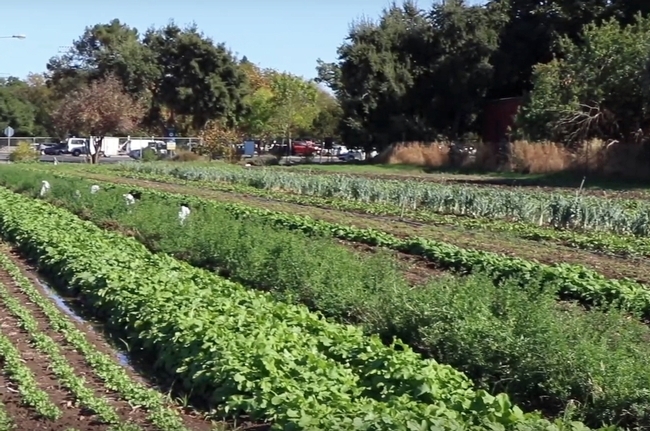
organic farm
Production Cost Study for Coastal Lemons
A new study on the costs and returns of establishing and producing lemons in Ventura County has been released by UC Cooperative Extension in Southern California and UC Agricultural Issues Center, both part of UC Agriculture and Natural Resources.
“Coastal agriculture is always in transition and as strawberries and vegetables become less profitable due to markets and labor availability, lemons have returned as a potentially profitable alternative to those crops,” saidBen Faber, UC Cooperative Extension farm advisor for Ventura County and coauthor of the study.
California lemon acreage was at roughly 47,000 acres in 2018-19, of which Ventura County accounts for 31%, according to the 2019 Ventura County Crop Report. Ventura County was growing lemons on 14,407 acres in 2019.
“The profitability of lemon production depends on the price of land,” said Etaferahu Takele, UC Cooperative Extension farm management advisor for Southern California, another coauthor of the study. “If the price of land continues in its current trend, it could be prohibitive for new entrants to make a profit and limit further expansion of lemon production in the county.”
Their cost analysis describes production operations for Eureka lemons on macrophylla rootstock, which are planted at 155 trees per acre with an expected life span of 40 years.
The study includes a detailed summary of costs and returns and a profitability analysis of gross margin, economic profit and a break-even ranging analysis table, which shows profits over a range of prices and yields.
Input and reviews were provided by Ventura County farm advisor and grower cooperators. The authors describe the assumptions used to identify current costs for lemon establishment and production, material inputs, cash and non-cash overhead.
The new study, “2020 - Sample Costs to Establish and Produce Eureka Lemons in Ventura County,” can be downloaded for free from the UC Davis Department of Agricultural and Resource Economics website at http://coststudies.ucdavis.edu and the UCCE Riverside County Farm Management website at https://ucanr.edu/sites/Farm_Management/files/338947.pdf. Sample cost of production studies for many other commodities are also available on the websites.
For additional information or an explanation of the calculations used in the studies, refer to the section of the report titled “Assumptions” or contact Takele at (951) 683-6491 Ext. 243 ettakele@ucanr.edu or Donald Stewart at the UC Agricultural Issues Center at (530) 752-4651, destewart@ucdavis.edu.
For information about production of lemons in Ventura County, contact Faber at bafaber@ucanr.edu.
Lemon Orchard - Edward Okun

lemon orchard Edward Okun
Mexican Citrus Growing?
USDA Report on Mexican Citrus Industry
This is a recent USDA report on the state of the Mexican citrus industry. It's interesting to hear how this industry is doing faced with HLB. And Drought.
Significant and ongoing drought conditions in many citrus-producing states have resulted in a reduction in all citrus production, compared to the previous report, with orange production forecast to fall forty-five percent. As a result of low orange supplies for processing, fresh concentrated orange juice exports to the United States are expected to fall to nearly half of the MY 2018/19 export level. COVID-19 sanitary measures are affecting domestic consumption of citrus fruit and juice, as many hotels and restaurants have been closed since mid-March. Full consumption effects will depend on the length of ‘stay at home' orders and the long term effect on the hotel and restaurant industries.
Drought and high temperatures
Orange production is estimated at 2,53 million tons for 2019/2020. That is 45% less than previous estimates. It is also the lowest expected harvest since the early 90s. This estimate is based on grower data and discussions with sector representatives.
The persistent drought and high temperatures have had a more drastic effect on orange production that other citrus. That is because many of the orange groves are older and need more energy to produce fruit. Many small farmers also lack irrigation technology. They practice bad pest control too, which compounds cultivation issues. Large-scale growers mostly have several irrigation mechanisms. They use fertilizers and apply other mitigating measures too. These include leaving weeds growing around the tree trunks. This retains moisture.
There have been intense temperatures and lack of rain throughout the growing season. That has resulted in a widespread decline in the orange's quality. Most fruit in the orange-growing region are smaller and of lower quality. In the state of Veracruz, October and November 2019 were the hottest months.
It usually rains throughout the growing season. However, this season, it was concentrated in two months. That resulted in a shorter growing season. The last flowering cycle indicates the harvest's end. This was between December and March. In Veracruz, oranges can usually be harvested until June.
Mexico is typically the world's second-largest producer of limes, and the fruit is the second-largest planted citrus crop in Mexico after oranges. While drought has affected lemon and lime production throughout the country, they have not been as affected as oranges. This can be attributed to newer plants and more widely available irrigation infrastructure. Persian lime trees in Veracruz are newer and more efficient, with 12 blooms, or harvests per year.The Post planted area for all limes and lemons in MY 2019/20 is forecast at 208,000 hectares, similar to previous MY; however, harvested area is expected to decrease eight percent due drought and high temperatures that caused some producers to abandon harvest or replant trees.
Italian lemons (Eureka) are grown in the states of Tamaulipas, Yucatan, San Luis Potosi, Colima, and Nuevo Leon. According to producers, there are currently attempts to grow the Italian lemon in the state of Veracruz with very good results. According to official sources, for MY 2018/19, production of Italian lemons was 131,469 MT on about 9,264 hectares. Sources indicate that lemon supplies for MY 209/20 are tight, and prices are high.
HLB
As with other citrus-producing countries, Mexico is facing issues with citrus greening, or Huanglongbing (HLB). The disease, caused by bacteria introduced by psyllids, makes citrus trees produce misshapen, partially green fruit (taste is typically not affected, but has no marketability for fresh consumption). Mexico's first detection was in 2009, and since then, the National Service of Agricultural Food Safety and Quality (SENASICA) has implemented a monitoring program for the disease. HLB has been detected throughout Mexico in citrus production areas. Producing states, including Veracruz, Tamaulipas, San Luis Potosi, and Nuevo Leon, have had HLB detections. In 2019, Baja California had HLB positive detections along the California/Mexico border region
On the map, dark outlined areas are where citrus is grown and yellow shaded is drought area.
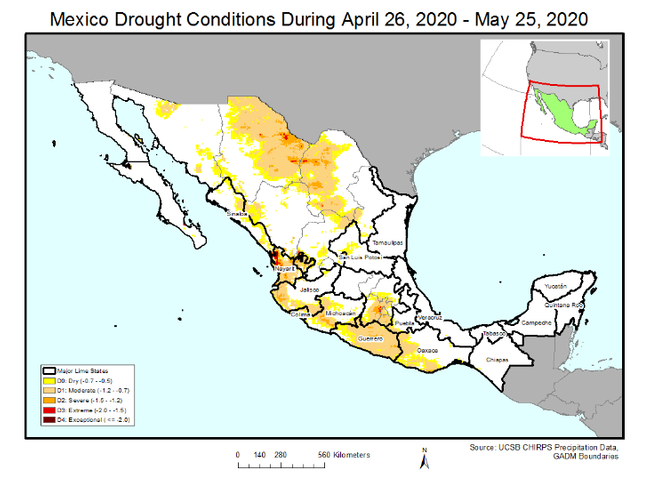
Mexican citrus drought
Florida Orange Production UP!!!
The USDA has summarized the US citrus crop for 2018-19 and it is up for both California and Florida, with CA accounting for 51% of US production! But the Florida orange crop is up from last year. This is the state that is getting hammered by huanglongbing amongst all the other demands being made on that industry. This is good news for citrus.
The full report is Here
But the summary is:
Citrus utilized production for the 2018-19 season totaled 7.94 million tons, up 31 percent from the 2017-18 season. California accounted for 51 percent of total United States citrus production; Florida totaled 44 percent, and Texas and Arizona produced the remaining 5 percent.
Florida's orange production, at 71.8 million boxes, is up 59 percent from the previous season.Grapefruit utilization in Florida, at 4.51 million boxes, is up 16 percent from last season's utilization. Florida's total citrus utilization increased 56 percent from the previous season. Bearing citrus acreage, at 387,100 acres, is 13,800 acres below the 2017-18 season.
Utilized citrus production in California increased 15 percent from the 2017-18 season. California's all orange production, at 49.8 million boxes, is 13 percent higher than the previous season. Grapefruit production is down 16 percent from the 2017-18 season but tangerine and mandarin production is up 35 percent. Utilized production of citrus in Texas is up 29 percent from the 2017-18 season. Orange production is up 33 percent from the previous season and grapefruit production increased 27 percent. Total citrus production in Arizona's lemon production is up 35 percent from last season.
The value of the 2018-19 United States citrus crop increased 1 percent from last season, to $3.35 billion (packing house-door equivalent). Orange value of production decreased 7 percent from last season and grapefruit value is down 1 percent.
Tangerine and mandarin value of production is 31 percent higher than last season but lemon value of production is down 4 percent.
Overall comparisons discussed above are based on similar fruit types. The revised production and utilization estimates are based on all data available at the end of the marketing season, including information from marketing orders, shipments, and processor records. Allowances are made for recorded local utilization and home use. Estimates for the 2018-19 California Valencia oranges and grapefruit are preliminary.
BUT, the latest news from the Central Valley navel forecast is that it is down,
The 2019-20 California navel crop is down 7% from last season, according to the first U.S. Department of Agriculture estimate.
With harvest expected to begin in October, the California navel forecast is 76 million (40-pound) cartons, down 7% percent from the previous year, the USDA said Sept. 12.
Farming is a roller coaster.

citrus cornucopia
World Citrus News
There's so much gloom about the fate of citrus in Florida and California, but in spite of that talk, world citrus production is increasing.
Global orange production for 2018/19 is forecast to expand 4.2 million tons from the previous year to 51.8 million as favorable weather leads to larger crops in Brazil and the United States. Consequently, fruit for both fresh and processing uses is expected to be greater. Fresh exports are forecast 4 percent higher to 5.1 million tons.
Brazil's production is forecast to rise 13 percent to 17.8 million tons as favorable weather is expected to result in good bloom and fruit set. Fresh orange consumption and exports are flat while oranges for processing are up 2.0 million tons to 12.8 million.
China's production is projected down slightly to 7.2 million on unfavorable weather, resulting in a smaller crop in Jiangxi province. Along with only a small increase in imports, consumption is
lower on overall reduced supplies. South Africa and Egypt are the top two suppliers, accounting for 60 percent of imports.
U.S. production is forecast to recover, jumping 41 percent to 5.0 million tons due to favorable weather. Orange production in Florida has been declining for years due to citrus greening, which has decimated groves and increased costs for crop maintenance.
However, last year, the industry also suffered from damages caused by Hurricane Irma. This year's higher forecast shows a recovery to recent-year levels. Exports, consumption, and fruit for processing are all higher with the larger crop.
Read more about the world citrus industry and get individual country reports generated by the USDA's Foreign Agricultural Service
https://agfstorage.blob.core.windows.net/misc/FP_com/2019/03/04/Florr.pdf
FAS Reports from Overseas Offices The Citrus: World Markets and Trade circular is based on reports from FAS Overseas Posts since December 2018 and on available secondary information. Individual country reports can be obtained on FAS Online at: http://gain.fas.usda.gov/Pages/Default.aspx .

citrus cornucopia

